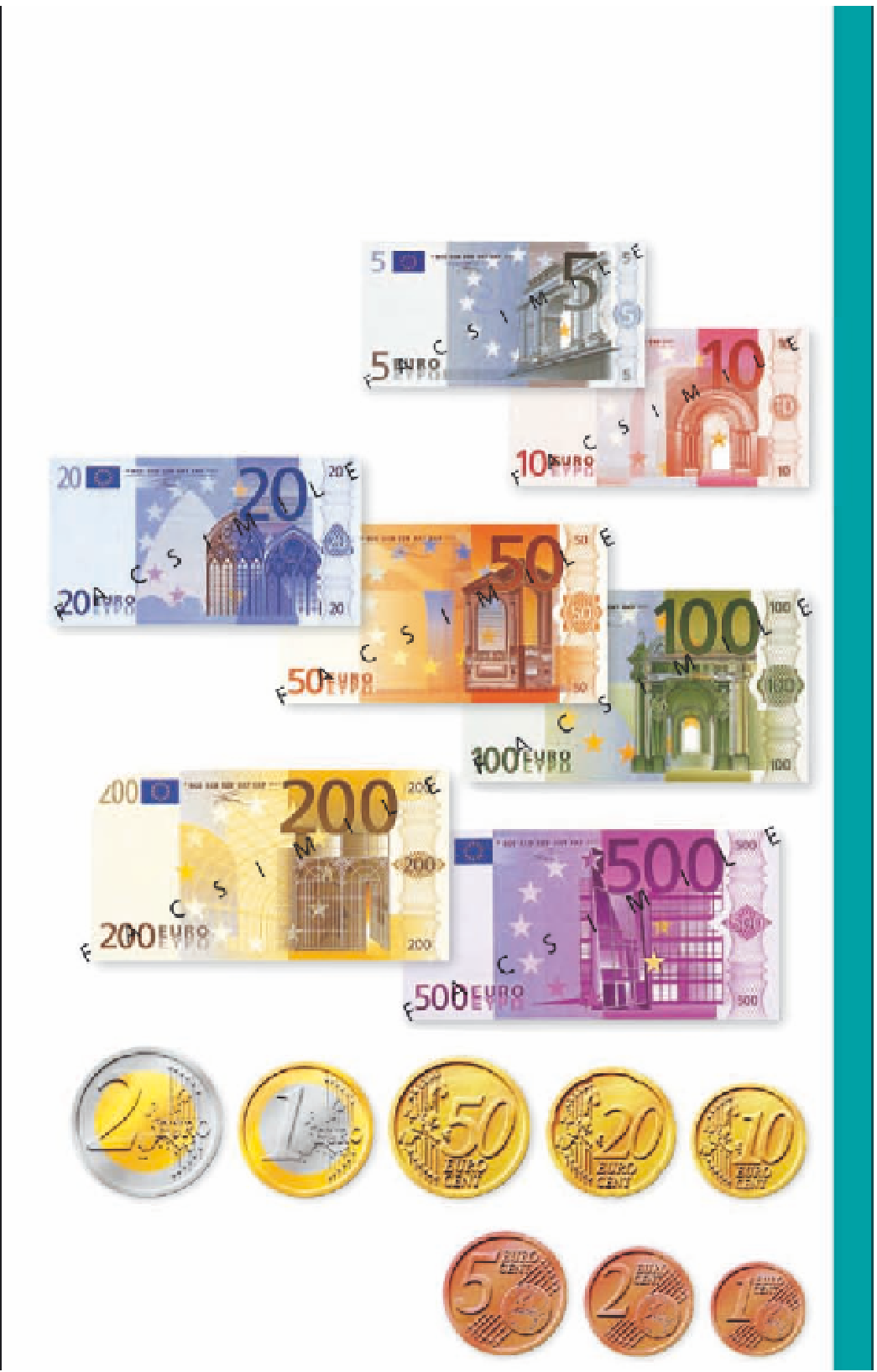Travel Reference
In-Depth Information
THE EURO
lira was phased out in Febru-
ary 2002. EU members using
the euro as their sole official
currency are known as the
Eurozone. Several EU mem-
bers have opted out of joining
this common currency.
Euro notes are identical
throughout the Eurozone,
each one including designs
of fictional architectural struc-
tures and monuments. The
coins, however, have one side
identical (the value side), and
one side with an image unique
to each country. Both notes
and coins are exchangeable
in each participating country.
The euro (€) is the common
currency of the European
Union. It went into general
circulation on 1 January 2002,
initially for 12 participating
countries. Italy was one of
those 12 countries, and the
Euro Bank Notes
Euro bank notes have seven
denominations. The €5 note (grey
in colour) is the smallest, followed
by the €10 note (pink), €20 note
(blue), €50 note (orange), €100
note (green), €200 note (yellow)
and €500 note (purple).
5 euros
10 euros
20 euros
100 euros
200 euros
500 euros
2 euros
1 euro
50 cents
20 cents
10 cents
Coins
The euro has eight coin denominations:
€1 and €2; 50 cents, 20 cents, 10 cents,
5 cents, 2 cents and 1 cent. The €2 and €1
coins are both silver and gold in colour. The
50-, 20- and 10-cent coins are gold. The 5-,
2- and 1-cent coins are bronze.
5 cents
2 cents
1 cent



































